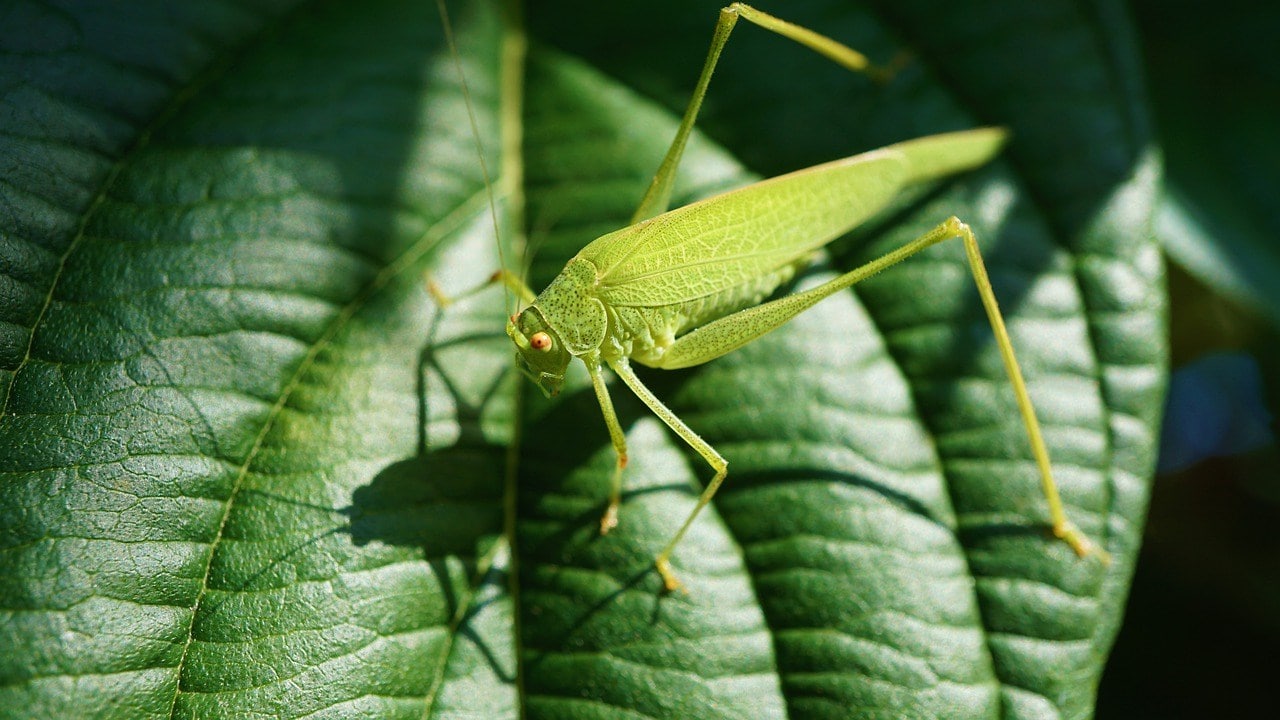Click to Skip Ahead
As a kid, you probably spent hours outside checking out all the insects in your yard. When you saw a little grasshopper spring up, you might have run out of fear or tried to catch them. But have you ever considered keeping one as a pet?
Of course, caring for them requires more than simply sticking them in a jar with holes poked in the lid. So, what exactly does it take to keep them as pets, and should you do it? Grasshoppers can be rewarding pets for certain people. They are easy to keep, feed, and care for, so the commitment aspect isn’t a huge burden. Read on as we lay out the specifics.

What Kinds of Grasshoppers Are There?
Grasshoppers are among the most common insects worldwide. During the warm summer months, you can find them in your backyard.
But not all grasshoppers are the same. There are over 660 species in the United States alone. Here is a list of the most commonly seen types of grasshoppers:
- Katydid
- Two-Striped Grasshopper
- Red-Legged Grasshopper
- Carolina Locust
- Melanaplinae
- Differential Grasshopper
- American Bird Grasshopper
- Easter Lubber Grasshopper
- Pygmy Grasshopper
- Pseudo Chorthippus Parallelus
- Migratory Grasshopper
- Plains Lubber Grasshopper
- Band-Winged Grasshopper
- Common Green Grasshopper
- Schistocerca
- Painted Grasshopper
- Silent Slant-Faced Grasshopper
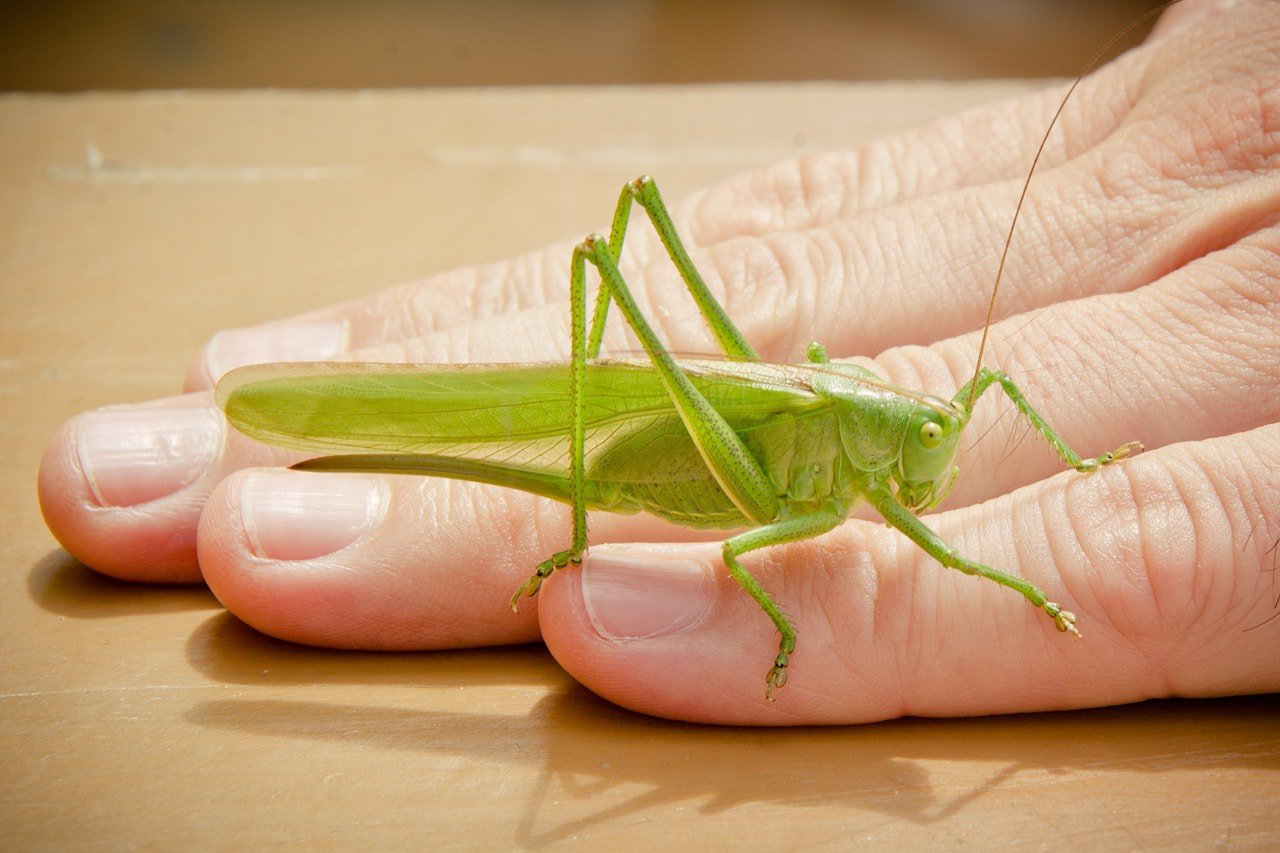

Basic Grasshopper Information
Grasshoppers are part of the Caelifera suborder and are some of the world’s most ancient insects. Their powerful legs are a defense mechanism, enabling them to deter predators.
The grasshopper’s long, springy legs also help them make music with their bellies. They are capable of jumping long distances and even flying.
During warm months, grasshoppers are prevalent in rural and suburban areas. Here are some of the primary aspects of the grasshopper lifestyle.
Diet
Some grasshoppers are strict herbivores, while other species are omnivores. They get most of their nutrients from polyphagous plant material.
In captivity, you can feed your grasshopper a diet of plant material, but their favorites are canary grass and fresh reeds. You can also offer vegetables and corn leaves for optimal nutrition.
Lifespan
Most grasshoppers live for only a year. Once they reach sexual maturity, they reproduce quickly and complete their life cycles soon after.
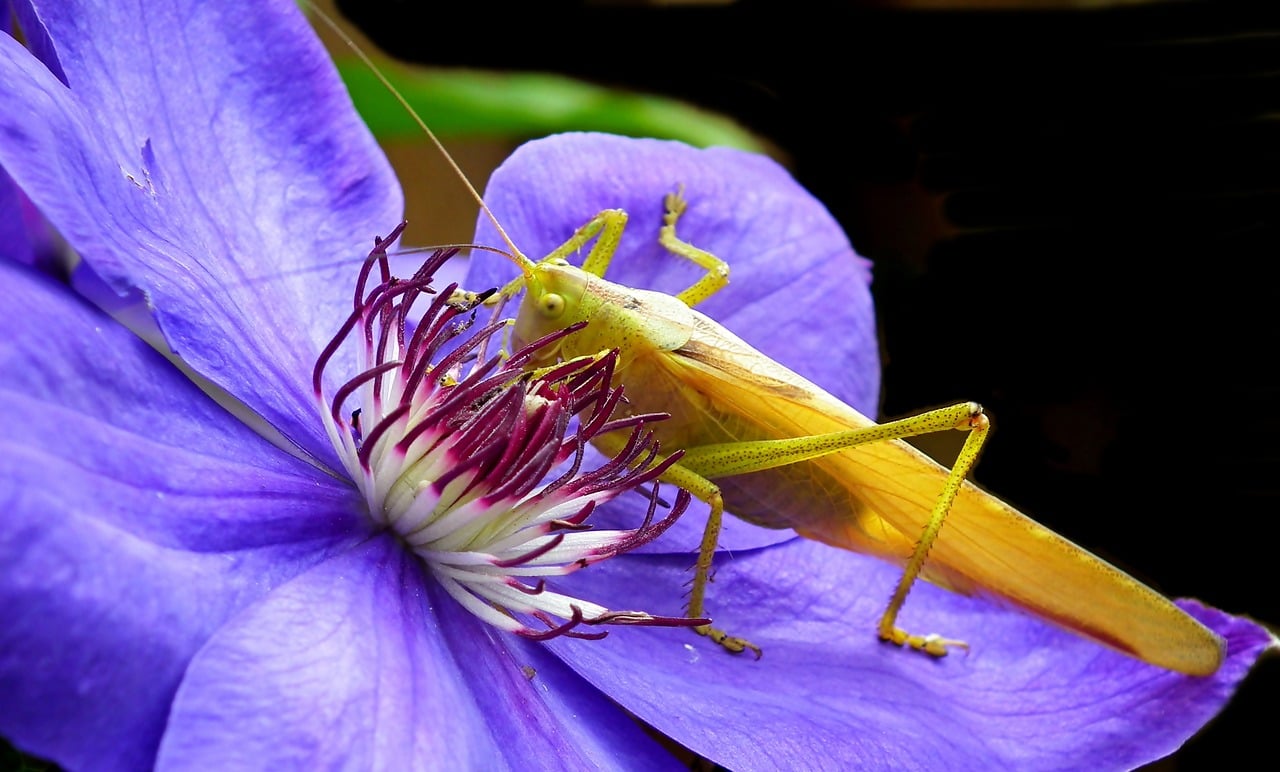
Environmental Needs
Grasshoppers might look small and harmless, but they have mighty jaws. They can easily chew through fabric, so they require a glass terrarium with a metal wire lid to stay contained.
Male vs. Female
You can determine the sex of grasshoppers by looking at their abdomens. A female’s abdomen is tapered and tube-like, while the male’s is rounded and upturned. When fully grown, females are noticeably larger than their male counterparts.
Breeding
Grasshoppers breed quickly and plentifully in the autumn months. After males fertilize the females during breeding, the females lay their egg deposits for next summer; eggs hatch after 25 to 35 days.
Females can lay up to 100 eggs per fertile period.
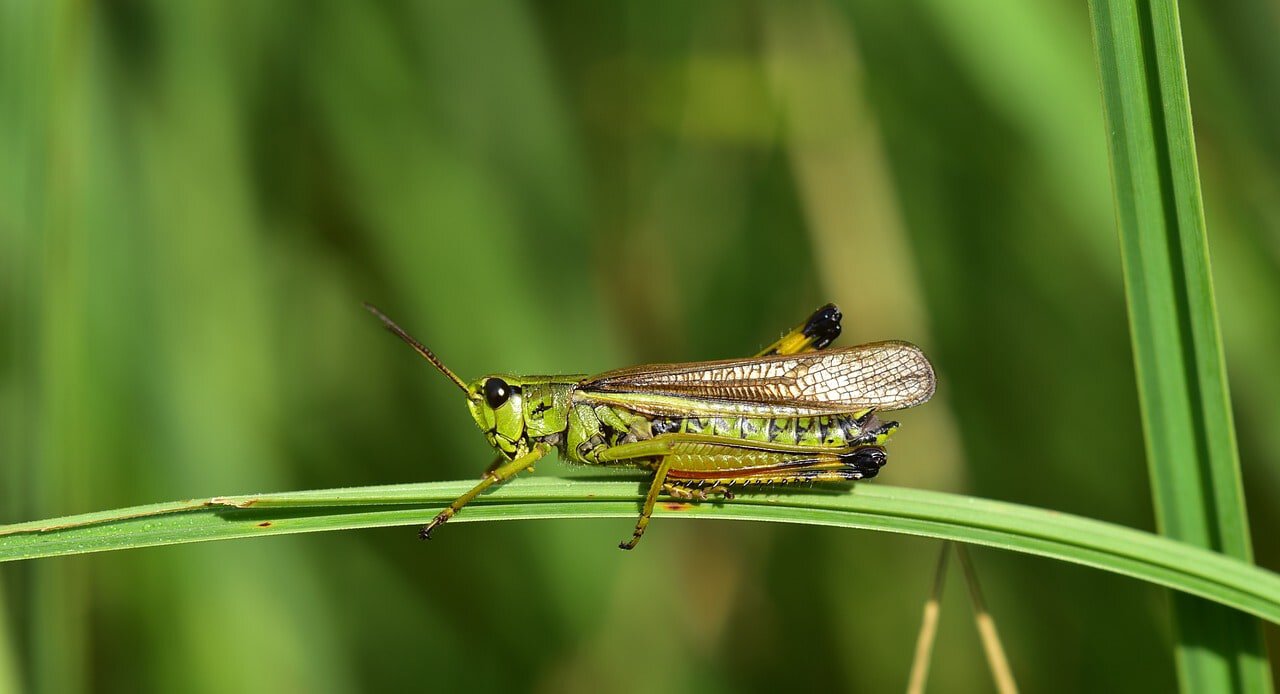

Keeping Grasshoppers as Pets: Pros and Cons
Grasshoppers can make great pets for the right owners. Check out the benefits and drawbacks of housing one or more of these insects.
- Easy to keep
- Inexpensive to feed
- Potentially profitable breeding
- Multiply quickly

Keeping Grasshoppers for Feed
Since grasshoppers breed so quickly, many people keep them for feeders. They can be gut-loaded insects and make terrific food sources for pets like lizards and other reptiles.
If you want to have grasshoppers to offer your pets, make sure that you feed them a nutrient-rich diet so your pet can reap the rewards.
Can You Handle Grasshoppers?
You can handle grasshoppers, but try not to stress them out. If you hold them too often or mishandle them, they can get very worked up when you have them out.
Also, they can get injured when jumping around your home. Therefore, when possible, you should keep your grasshoppers in their habitat.
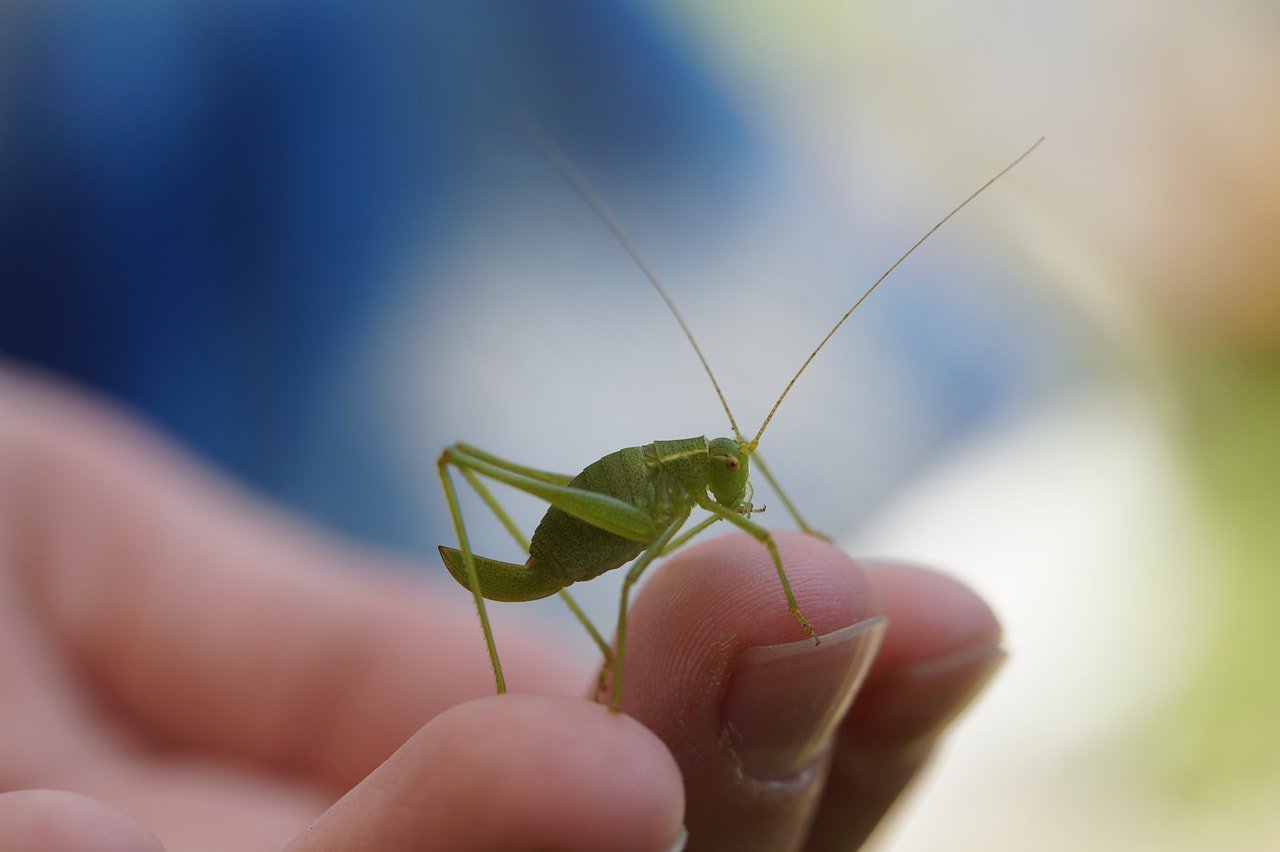

Top 8 Fun Grasshopper Facts
1. Grasshoppers Are Older Than Dinosaurs
Grasshoppers predate dinosaurs; they’re thought to be around 250 million years old.
2. Grasshoppers Can Spit
As a defense mechanism, grasshoppers can spit impressive distances to get predators to leave them alone. The fluid contains partially digested plants and enzymes nicknamed “tobacco juice.”
3. Grasshoppers Can Jump Incredibly High
As their name implies, grasshoppers have an incredible jumping ability. Some can jump as high as 30 inches!
4. Grasshoppers Are Locusts
Yes, grasshoppers and locusts are the same. However, even though all locusts are grasshoppers, not all grasshoppers are locusts.
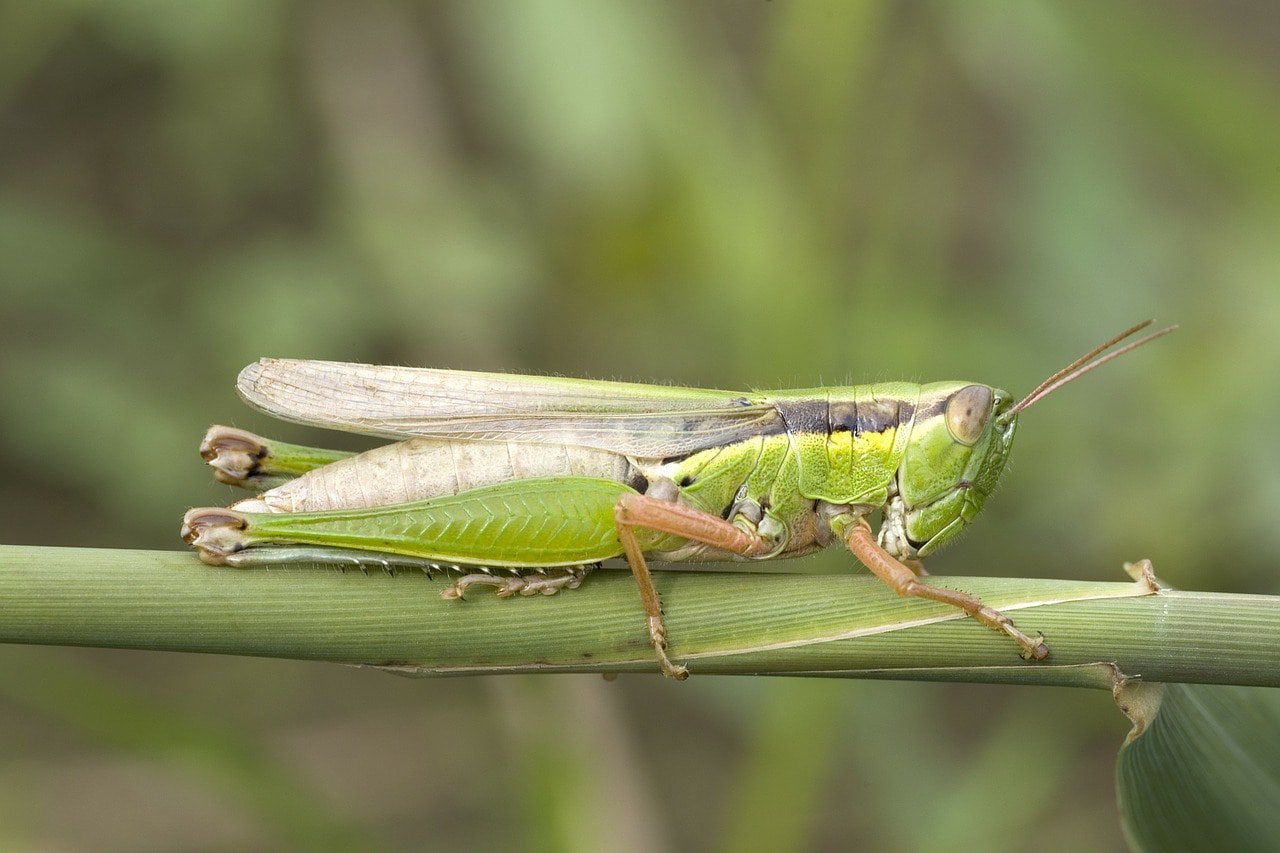
5. A Grasshopper Is Like a Mini Violin
Grasshoppers can play high-pitched songs with their bodies. When you hear the insects singing in the wind, which is a grasshopper? Most grasshoppers make a chirping sound by rubbing their legs on their wings.
6. Grasshoppers Know How to Fly
Grasshoppers are winged creatures that cannot fly long distances, but they can fly far enough to evade predators. Some grasshoppers can fly up to 920 feet high.
7. Grasshoppers Are Voracious Eaters
Grasshoppers can devastate crops and wipe out entire fields. But don’t worry about your garden, as this only happens in some regions of the world.
8. In Certain Cultures, Grasshoppers Are a Solid Protein Source
Grasshoppers carry an average of 72% protein, which is incredible! For this reason, many countries rely on grasshoppers as a food source.

In Conclusion
So, does a grasshopper sound like a pet you could have around the house? They are inexpensive, and you can replenish your supply with ease. If you have pets that require grasshoppers for sustenance, keeping them can be a great alternative to buying.
No matter your reason, grasshoppers are easily manageable pets for most lifestyles.
Featured Image Credit : Pixabay
